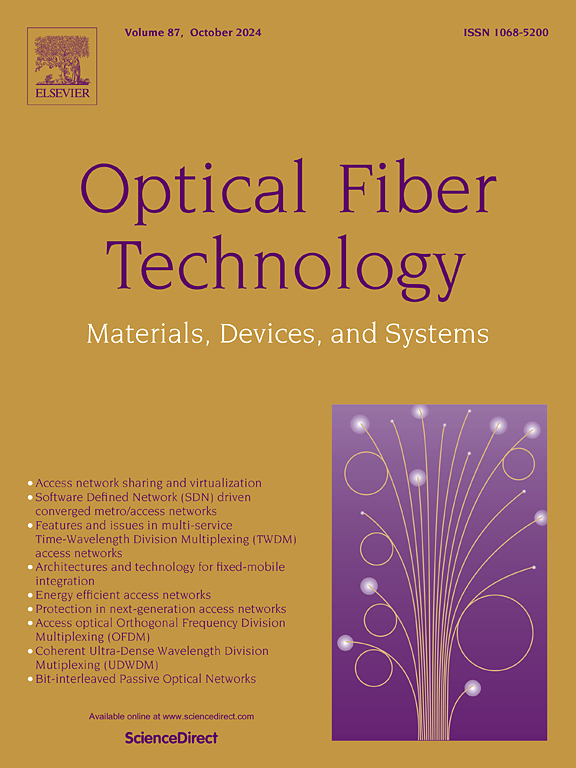一种用于表面特征测量和识别的带滚球装置的光纤光栅触觉传感器
IF 2.7
3区 计算机科学
Q2 ENGINEERING, ELECTRICAL & ELECTRONIC
引用次数: 0
摘要
触摸对于获取表面特征是必不可少的,但材料变化和环境条件(如温度和湿度)会影响表面摩擦,使纹理识别复杂化。本研究提出了一种滚动球型光纤布拉格光栅(FBG)触觉传感器,利用FBG的高灵敏度和抗电磁干扰能力,通过滚动来检测纹理,从而最大限度地减少摩擦引起的干扰。静态标定试验表明,传感器的平均灵敏度为20.8 pm/N(加载)和20.5 pm/N(卸载),线性度均为0.998,重复性低,滞后误差分别为1.6%和1.1%。采用深度为1.5 mm、间距为2,3和4 mm的凹凸纹理对传感器进行了评估,结果表明,在不同条件下,纹理参数的精确计算误差小于0.1 mm。当接触力一致时,信号幅值与织构间距相关。一种反向传播(BP)分类算法在5、10和15 mm/s的速度下实现了100%的准确率,总体准确率为98.52%。该传感器为机器人指尖的高级触觉感知提供了有价值的见解。本文章由计算机程序翻译,如有差异,请以英文原文为准。
A FBG tactile sensor with rolling ball device for surface feature measurement and recognition
Touch is essential for acquiring surface characteristics, but material variations and environmental conditions such as temperature and humidity can affect surface friction, complicating texture recognition. This study proposes a rolling ball-type Fiber Bragg Grating (FBG) tactile sensor, which leverages FBG’s high sensitivity and electromagnetic interference resistance to detect textures through rolling, thereby minimizing friction-induced interference. Static calibration tests showed the sensor’s average sensitivity to be 20.8 pm/N (loading) and 20.5 pm/N (unloading), both with a linearity of 0.998, and low repeatability and hysteresis errors of 1.6 % and 1.1 %, respectively. The sensor was evaluated with concave-convex textures of 1.5 mm depth and spacings of 2, 3, and 4 mm, demonstrating that texture parameters could be accurately calculated with errors less than 0.1 mm across different conditions. Signal amplitude correlated with texture spacing when the contact force was consistent. A Back Propagation (BP) classification algorithm achieved 100 % accuracy at speeds of 5, 10, and 15 mm/s, with an overall accuracy of 98.52 %. This sensor provides valuable insights for advanced tactile perception in robotic fingertips.
求助全文
通过发布文献求助,成功后即可免费获取论文全文。
去求助
来源期刊

Optical Fiber Technology
工程技术-电信学
CiteScore
4.80
自引率
11.10%
发文量
327
审稿时长
63 days
期刊介绍:
Innovations in optical fiber technology are revolutionizing world communications. Newly developed fiber amplifiers allow for direct transmission of high-speed signals over transcontinental distances without the need for electronic regeneration. Optical fibers find new applications in data processing. The impact of fiber materials, devices, and systems on communications in the coming decades will create an abundance of primary literature and the need for up-to-date reviews.
Optical Fiber Technology: Materials, Devices, and Systems is a new cutting-edge journal designed to fill a need in this rapidly evolving field for speedy publication of regular length papers. Both theoretical and experimental papers on fiber materials, devices, and system performance evaluation and measurements are eligible, with emphasis on practical applications.
 求助内容:
求助内容: 应助结果提醒方式:
应助结果提醒方式:


